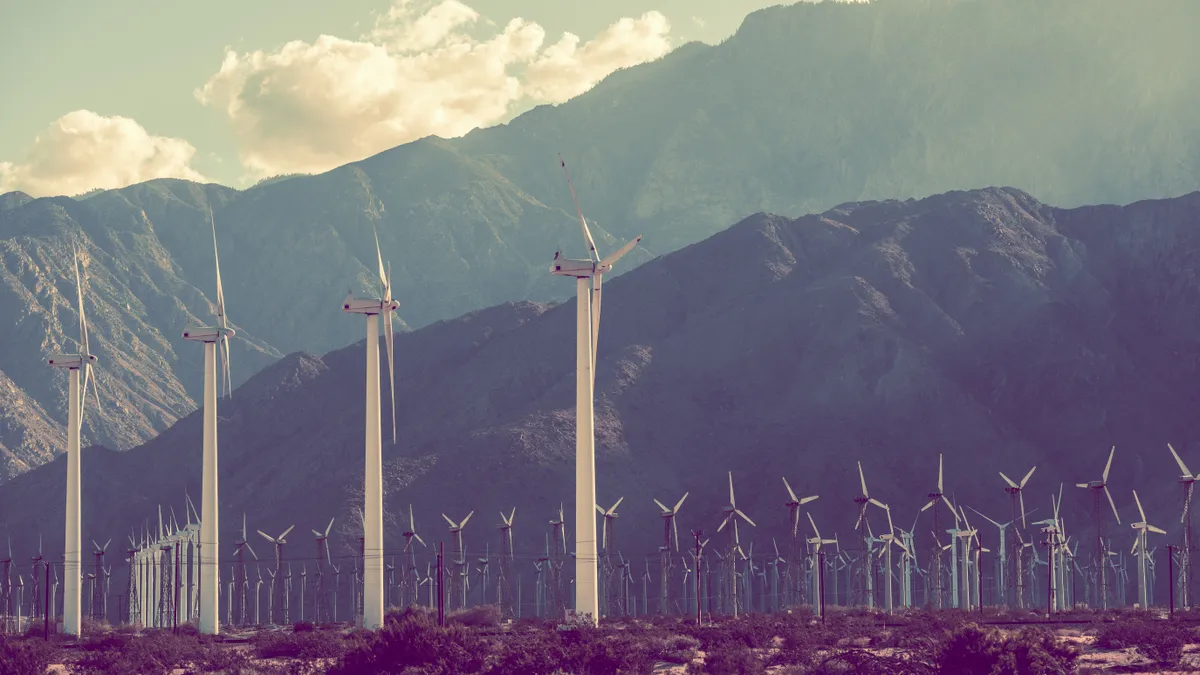Dive Brief:
- California regulators have launched a "procurement track" to address potential reliability questions between 2019 and 2024, including whether there are sufficient resources to meet the state's peak system reliability needs.
- On June 20, the California Public Utilities Commission issued a commissioner's ruling that recommends load serving entities (LSE) procure 2 GW of new peak capacity statewide, to come online by Aug. 1, 2021.
- The procurement track proceeding is a part of the state's effort to overhaul utility integrated resource planning (IRP). Initial comments are due July 15.
Dive Insight:
Near- and medium-term renewable integration and reliability resources are "most in need of our immediate attention," according to the commission's ruling.
"Because of the urgent need, this ... will become our first opportunity to design a mechanism to ensure that the appropriate and needed resources are procured, either by the individual LSEs procuring their share or by development and implementation of a backup mechanism," Administrative Law Judge Julie Fitch and Commissioner Liane Randolph wrote.
The ruling proposes LSEs procure, on an all-source basis, proportional shares of 2,000 MW of peak capacity statewide. Resources could be renewables, storage, demand response, energy efficiency and other distributed energy resources. Firm imports could qualify, though they would have a one-third capacity discount due to the state's growing reliance on imports and the associated risk. Conventional thermal resources could also be used.
California's bilateral resource adequacy market could be relying on approximately 8,800 MW of maximum import capacity to meet the system peak by 2021, the ruling states.
The ruling also proposes Southern California Edison solicit 500 MW of capacity, for terms of two to five years, from existing resources that are without a contract past 2021.
"Together, these measures would keep the reliance on import capacity similar to historical limits, instead of increasing that reliance to almost the maximum potential level of imports," the ruling said. "We also hope this would reduce the potential for exercise of market power, while providing for a transition to increasing reliance on renewables."
California is aiming for 60% renewable power by 2030 and 100% clean energy by 2045.
Reply comments in the procurement track are due July 25, according to the ruling. The commission could schedule workshops for August, eyeing a proposed decision in late fall. Actual procurement activities could begin late this year or early 2020, according to the preliminary schedule.















